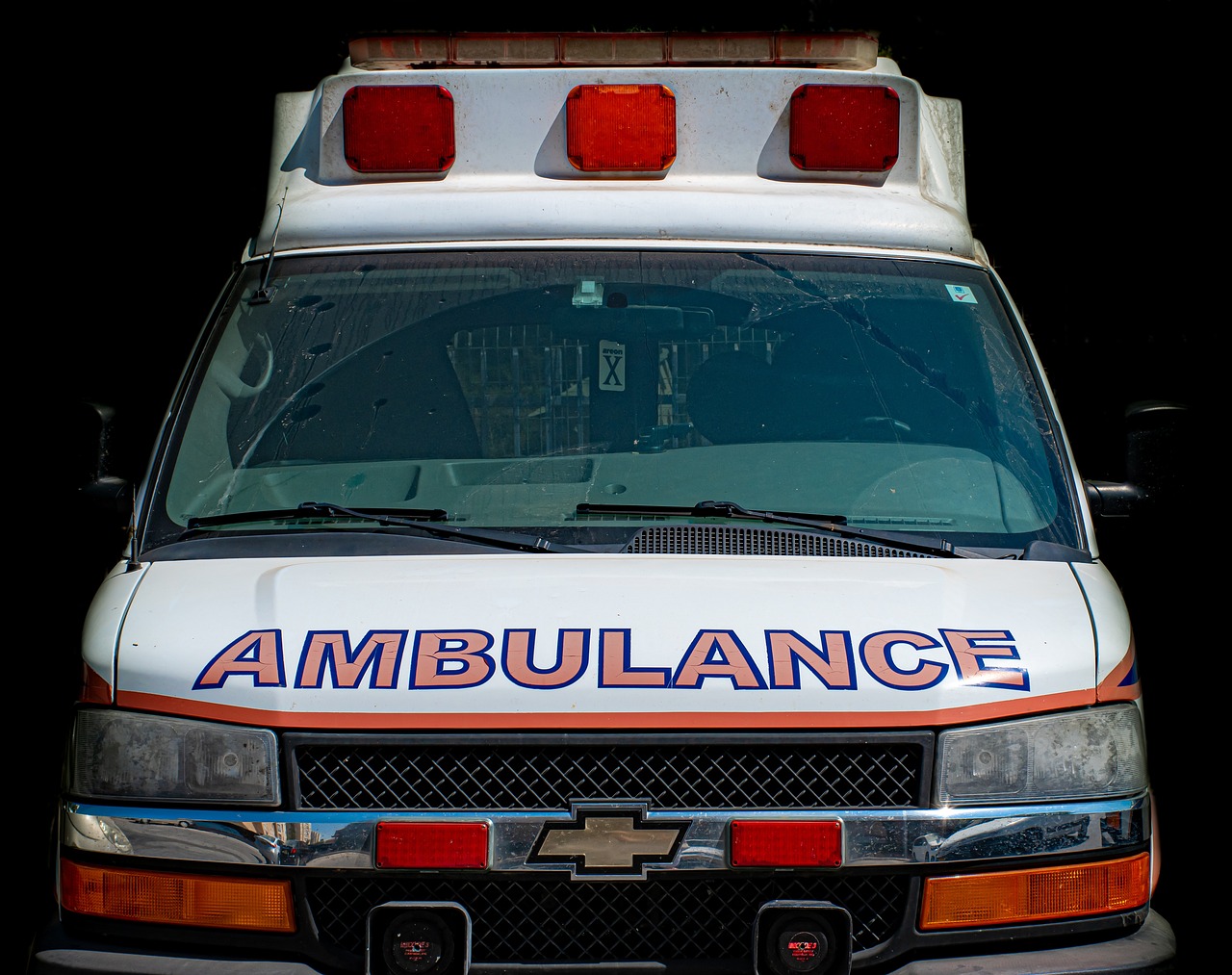Injuries can have a profound impact on our lives, leading to long-term health issues and significant lifestyle changes. Understanding the root causes of severe injuries is crucial for taking proactive steps to prevent them. By identifying the common risks and implementing preventive measures, we can reduce the likelihood of accidents and safeguard our well-being.
In this article, we will explore the five most prevalent causes of severe injuries that affect people across various environments, from the workplace to recreational activities. Whether it’s due to unsafe practices, environmental hazards, or equipment failures, knowing these causes can help us address the underlying issues and adopt safer habits. We will also provide practical tips and strategies to mitigate these risks, empowering you to take control of your safety.
Prevention is always better than cure, and by staying informed about potential hazards and implementing preventive measures, we can significantly lower the chances of severe injuries. Join us as we delve into these common causes and discover actionable advice to help you and your loved ones stay protected and healthy.
1. Falls
Falls are a prevalent cause of severe injuries, particularly among older adults and in environments where elevation changes are common. The consequences of falls can be severe, ranging from fractures and dislocations to head trauma and even death. In older adults, falls often result in significant mobility issues and a decreased quality of life. In workplaces, especially in construction or maintenance jobs, falls from heights can lead to catastrophic injuries and fatalities.
Preventing falls requires a multifaceted approach. In the home, maintaining clear and clutter-free walkways, using non-slip mats in areas prone to water, and ensuring adequate lighting can significantly reduce the risk of tripping. For older adults, strength and balance exercises can help improve stability and coordination, making falls less likely. Installing grab bars in bathrooms and handrails on stairs provides additional support and safety.
In occupational settings, fall prevention strategies are crucial. Ensuring that all workers are trained in safe work practices and the proper use of fall protection equipment, such as harnesses and guardrails, is essential. Regular inspections and maintenance of ladders, scaffolding, and other equipment also help minimize fall risks. By implementing these measures, both at home and in the workplace, the incidence of falls and their associated injuries can be significantly reduced.
2. Motor Vehicle Accidents
Motor vehicle accidents remain one of the leading causes of severe injuries and fatalities worldwide. The high speeds and heavy weights involved in vehicular collisions can result in catastrophic injuries, including traumatic brain injuries, spinal cord damage, and multiple fractures. These accidents can occur due to a variety of factors, such as driver error, adverse weather conditions, and mechanical failures. The impact of such accidents extends beyond physical injuries, often leading to significant emotional and financial stress for the victims and their families.
Preventing motor vehicle accidents involves a combination of safe driving practices and regular vehicle maintenance. Drivers should adhere to speed limits, avoid distractions like texting or using a phone, and always wear seat belts. Defensive driving techniques, such as maintaining a safe distance from other vehicles and being aware of road conditions, can also reduce the risk of accidents. Additionally, avoiding driving under the influence of alcohol or drugs is crucial for ensuring road safety.
Regular maintenance and timely repairs of vehicles are equally important in accident prevention. Ensuring that your vehicle’s brakes, tires, and lights are in good working condition can help prevent mechanical failures that might lead to accidents. Adopting advanced safety features, such as collision warning systems and automatic braking, can further enhance vehicle safety. By combining vigilant driving habits with well-maintained vehicles, the likelihood of motor vehicle accidents and their severe consequences can be significantly reduced.
3. Sports Injuries
Sports injuries are a common occurrence across various levels of athletic activity, from amateur to professional. These injuries can range from minor sprains and strains to more severe conditions like ligament tears, fractures, and concussions. High-impact sports, such as football and hockey, often result in traumatic injuries, while repetitive activities in sports like running or swimming can lead to overuse injuries. The physical demands and competitive nature of sports increase the risk of these injuries, which can have significant implications for an athlete’s performance and long-term health.
Preventing sports injuries involves a combination of proper training, protective gear, and technique. Athletes should engage in a comprehensive warm-up routine to prepare their bodies for physical exertion and to reduce the risk of muscle strains. Utilizing appropriate protective equipment, such as helmets, pads, and braces, can provide critical support and protection against impacts. Additionally, learning and adhering to proper techniques specific to each sport helps minimize the risk of injury caused by improper movements or exertion.
Incorporating strength and flexibility training into an athlete’s regimen is also beneficial for injury prevention. Building muscle strength and improving flexibility can enhance overall performance and reduce the likelihood of injuries related to fatigue or poor posture. Athletes should also listen to their bodies and avoid pushing through pain, as this can lead to exacerbating existing injuries or developing new ones. By following these preventive measures and maintaining a focus on safety, athletes can reduce their risk of injuries and enjoy a more sustainable and successful sporting experience.
4. Workplace Accidents
Workplace accidents are a significant concern across various industries, leading to severe injuries that can impact employees’ health and productivity. These accidents can occur due to unsafe working conditions, inadequate training, or equipment failures. Common types of workplace accidents include falls, machinery-related injuries, and exposure to hazardous materials. Such incidents not only affect injured employees but can also lead to financial losses for businesses due to medical expenses, legal fees, and decreased productivity.
Effective prevention of workplace accidents requires a comprehensive approach to safety management. Implementing and adhering to strict safety protocols, such as regular risk assessments and safety audits, can help identify potential hazards and mitigate them before they result in accidents. Providing employees with thorough training on safe work practices and emergency procedures is crucial for ensuring that they are prepared to handle potential risks. Additionally, maintaining and regularly inspecting machinery and equipment can prevent malfunctions that might lead to injuries.
Creating a culture of safety within the workplace is essential for long-term injury prevention. Encouraging open communication about safety concerns and involving employees in safety initiatives can foster a proactive approach to risk management. Employers should also ensure that appropriate personal protective equipment (PPE) is available and used correctly by all staff members. By prioritizing safety through these measures and maintaining a vigilant approach, businesses can significantly reduce the incidence of workplace accidents and enhance the overall well-being of their employees.
5. Home Accidents
Home accidents are a leading cause of severe injuries and can occur in various situations, from everyday activities to unexpected hazards. Common types of home accidents include slips and falls, burns, cuts, and poisoning. These incidents often result from a lack of safety precautions, such as slippery floors, hot surfaces, or hazardous substances. The consequences of such accidents can be severe, affecting individuals’ health, safety, and quality of life.
Preventing home accidents involves implementing practical safety measures throughout the home. To reduce the risk of falls, ensure that rugs are secured, use non-slip mats in bathrooms and kitchens, and keep walkways clear of clutter. For fire safety, install smoke detectors in key areas, keep flammable materials away from heat sources, and have a fire extinguisher readily available. Additionally, safeguarding sharp objects and storing cleaning chemicals out of reach of children can help prevent injuries and poisoning.
Maintaining a proactive approach to home safety is crucial for preventing accidents. Regularly checking and maintaining home safety equipment, such as smoke detectors and first aid kits, ensures they are in working order when needed. Educating family members about safety practices, such as proper handling of hot objects and safe kitchen practices, can further minimize the risk of accidents. By adopting these measures and staying vigilant, individuals can create a safer living environment and reduce the likelihood of severe home accidents.
Conclusion
In conclusion, understanding the most common causes of severe injuries and implementing effective prevention strategies is crucial for safeguarding ourselves and our loved ones. Falls, motor vehicle accidents, sports injuries, workplace accidents, and home accidents each present unique risks that can lead to significant harm. By recognizing these risks and taking proactive steps to address them, we can greatly reduce the likelihood of these incidents and their severe consequences.
Implementing safety measures such as maintaining clear walkways, adhering to safe driving practices, using protective sports gear, following workplace safety protocols, and ensuring home safety can significantly mitigate the risks associated with these common causes of injuries. It is essential to remain vigilant and continuously evaluate our environments and practices to ensure they meet safety standards.
Ultimately, prevention is the most effective way to protect ourselves and those around us from severe injuries. By staying informed, adopting safety best practices, and fostering a culture of safety in all areas of life, we can enhance our well-being and enjoy a healthier, safer lifestyle.
Secure Your Recovery After A Severe Injury In Phoenix, Arizona With Phoenix Injury Attorneys
At Phoenix Injury Attorneys, we understand the profound impact that a severe injury can have on your life. Our experienced and compassionate legal team, based in Arizona, is dedicated to providing not only skilled legal representation but also genuine care and empathy. Specializing in severe injury cases in Phoenix and the surrounding areas, we recognize that addressing such a significant trauma involves more than just legal proceedings—it’s about restoring your peace of mind and securing your future. By choosing us, you’re not just hiring legal experts; you’re gaining a group of advocates who are deeply committed to your well-being and success.
Led by Khalil Chuck Saigh, our collaborative approach ensures that every client benefits from our collective expertise, making us a formidable force in the pursuit of your rights and compensation. We are committed to providing personalized attention and tirelessly working to achieve the best possible outcomes for our clients in Phoenix and throughout Arizona. Trust Phoenix Injury Attorneys to handle your severe injury case with the utmost care and professionalism, so you can focus on healing and moving forward with your life. Reach out to us today to learn more about how we can assist you through this challenging time.
Disclaimer
The materials available on this website are for informational and entertainment purposes only and not to provide legal advice. You should contact your attorney to obtain advice concerning any particular issue or problem. You should not act or refrain from acting based on any content included in this site without seeking legal or other professional advice. The information presented on this website may not reflect the most current plumbing developments. No action should be taken in reliance on the information contained on this website and we disclaim all liability concerning actions taken or not taken based on any or all of the contents of this site to the fullest extent permitted by law.


